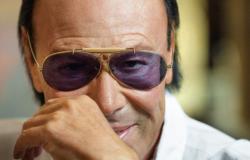Margaret Bourke-White in her career she has collected a series of records: first woman to be accredited by the American army in the theaters of war – in ’43 she was on the American fighter planes that were bombing and photographed what was one of the most violent attacks on the German army -; always during the war she was the only photographer foreigner in Moscow – his photo of the German attack on 26 July 1941 at the American embassy in Moscow it is considered one of the photographs that have entered history -; first female photographer for the weekly Life; the first unofficial portrait of him Stalinwhich also remained unique for many years and authorized outside the USSR, was also his last shot Gandhiimmortalized a few hours before he was murdered.
She was also the first to document the horrors of the Buchenwald extermination camp, the day after the prisoners were freed. «I saw and photographed the piles of naked and lifeless bodies, the human skeletons in the furnaces, the living skeletons that would die the next day because they had to wait too long for liberation, the pieces of tattooed skin used for lampshades – he wrote in his autobiography entitled “Portrait of myself” -. Using the camera was almost a relief. He placed a light barrier between me and the horror in front of me.”. Margaret Bourke-White will be the protagonist of the summer a Camera – Italian Center of Photography. It is dedicated, in fact, to the New York photographer (she was born in the Bronx in 1904) the exhibition “Margaret Bourke-White. The view from the roof of the world”.
Above, a shot by Paolo Novelli
Curated by Monica Poggiit will open June 14th next in the theaters of via delle Rosine and until 6 October will document, through 150 shots, the work and life of a master photographer, from her beginnings as an industrial photographer at the end of the twenties – she was the first to climb the iron castings of the foundries – to her reportages all over the world. Margaret he documented everything: the Great Depression, the works of Roosevelt’s New Deal, war, South African apartheid. She also documented her illness, the one that cost her her life in 1971. In conjunction with the exhibition of Bourke-White, Camera’s Project Room will host “The Day After the Night”staff of Paolo Novelli (Brescia, 1976) edited by the artistic director of Walter Guadagnini Center. The exhibition, with analogue black and white photographs linked to the theme of incommunicability, brings together two cycles of work by this exponent of contemporary research photography, created between 2011 and 2018, and considered central in the evolution of his language.







